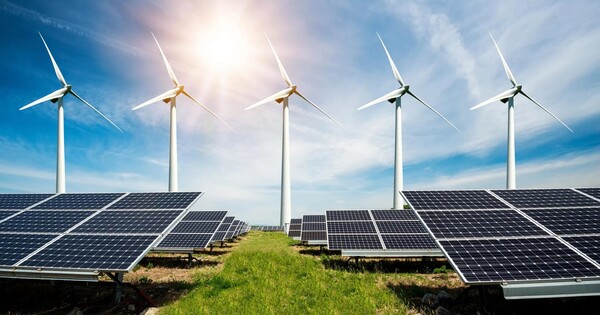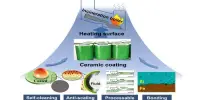Researchers propose a unique numerical decision-making framework for solar panel protection against extreme weather conditions. The framework combines advanced wind simulations with machine learning to optimize individual solar panel angles under strong winds. Unlike previous methods, this new method treats panels as independent decision-makers and identifies creative, data-driven solutions to reduce stress, significantly outperforming current safeguards.
Solar power is currently the fastest growing energy sector worldwide. Solar photovoltaic power plants convert sunlight into electricity and their vast potential for producing clean, renewable energy make solar power a cornerstone of the NetZero Emissions by 2050 initiative, which seeks to cut carbon dioxide emissions to zero by the year 2050.
Wind has both positive and negative effects on solar power grids. It helps maintain solar panel performance by eliminating the buildup of dirt and dust, and because solar panels typically lose efficacy as they heat up, the flow of wind over and around the surface of panels increases cooling and efficiency. However, the slender panels are vulnerable to high-wind events, even to the extent of structural collapse and failures that can take weeks to repair. In addition, insurance claims resulting from the vulnerability of photovoltaic panels to severe weather events have grown significantly with the increased use of solar energy.
By blending advanced fluid dynamics and artificial intelligence, we saw an opportunity to address wind damage risks innovatively and contribute to the resilience of renewable energy systems.
Elie Hachem
In Physics of Fluids, by AIP Publishing, researchers at the Centre for Material Forming at PLS University in Sophia Antipolis, France, proposed a unique numerical decision-making framework for solar panel protection against extreme weather conditions.
“By blending advanced fluid dynamics and artificial intelligence, we saw an opportunity to address wind damage risks innovatively and contribute to the resilience of renewable energy systems,” said author Elie Hachem.
Row spacing, ground clearance, and tilt angles have been the primary areas of focus for research teams seeking to lessen the effects of wind damage on solar panels. Tracking mounts that rotate the panels for maximum sunlight exposure remain in operation until a certain wind speed is reached. At this point, the panel goes into a presumed safe stow position parallel to the ground. While this stowing method is effective in some instances, the panels lose energy output in this position and, more importantly, are often not protected from higher wind speeds.
The framework used by the team combines advanced wind simulations with machine learning to optimize individual solar panel angles under strong winds. Unlike previous methods developed to protect the panels, this new method treats panels as independent decision-makers and identifies creative, data-driven solutions to reduce stress, significantly outperforming current safeguards.
“It’s like teaching the panels to dance with the wind, minimizing damage while protecting energy production during high wind speeds,” said Hachem.
The decision-making framework for solar panel protection challenges traditional engineering practices. It offers a scalable solution for enhancing real-world resilience, while opening the door for smarter, adaptive systems in the challenge of producing energy with net zero carbon emissions.
















